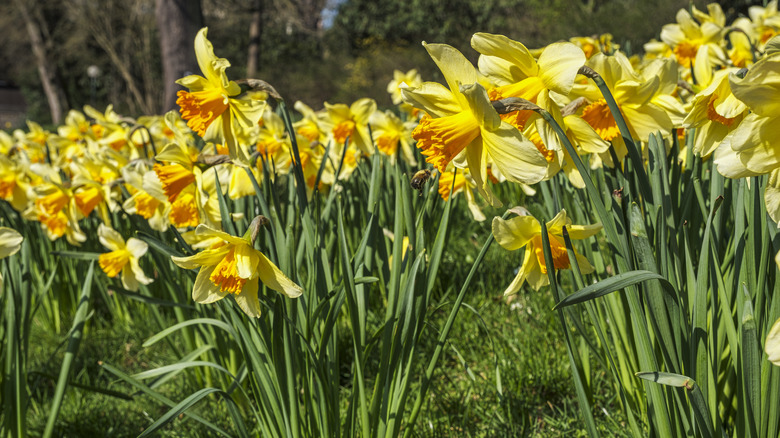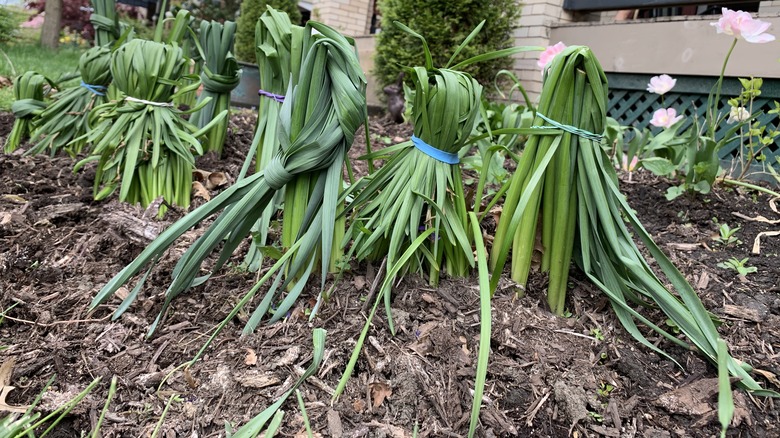What You Should Never Do With Daffodils After They Stop Blooming
Daffodils are a staple in the spring garden. These reliable bloomers, planted as bulbs in early fall, increase every year and produce gorgeous flowers that last for weeks in spring. Like other spring bulbs, one recommended tip for growing daffodils is to leave the foliage intact when blooming ends, and let it fade naturally to help nourish the bulb for future growth. But there's a somewhat odd practice seen from time to time that's not recommended while waiting for daffodil foliage to fade: tying or braiding the leaves together.
The first time I saw this method in my work as a professional gardener was in the yard of a client who enjoyed doing garden tasks. She had lovely perennials and also some overgrown woodland areas I helped her with. When I saw her flower beds with the daffodil leaves all tied up into clumps, I did a double take. I had heard of this practice but had never seen it, and had never done it myself because it seemed unnecessary, since the foliage would fade on its own eventually anyway.
Perhaps people think these lumpy clumps (or braids, another variation on this method) are less unsightly than the fading yellowing foliage flopping over on the ground. While tying or braiding is preferable to cutting the leaves back too soon, it's not only unnecessary, but may stress the bulbs. This practice also blocks sunlight from reaching the leaves and prevents photosynthesis from occurring, which may cause what British gardeners call "daffodil blindness" which means the daffodils will form leaves but not flowers the following year. Luckily, there are other options for hiding fading daffodil foliage.
Ways to hide fading daffodil foliage
There are several ways to hide or camouflage your fading daffodil foliage while you wait for it to fade enough to cut back or remove. Part of the trick is knowing how long this process will take. For early blooming daffodils (March or April), you can cut back the foliage after mid-May (or Mother's Day, some garden lore says). If you have May-blooming daffodils, wait until the first week of June (or Father's Day). If the foliage has started to turn yellow, and pulls away at a gentle touch, you can definitely remove it.
But in the meantime, one of the best solutions for keeping your spring beds looking vibrant as your daffodil leaves do their thing is to plant spring-blooming perennials near them. Once your spring perennials begin to emerge, their growing tufts of foliage and flowers will draw attention away from your daffodil leaves. Some good choices for hiding early blooming daffodils include columbines, hostas, and heucheras. For later bloomers, try phlox, sedums, and day lilies.
To make sure you don't crowd your daffodils as perennials increase in size, be sure to give everything a bit of room. It's recommended when planting daffodil bulbs to leave space for clumps to form, so use this same rule of thumb when planting adjacent perennials. My favorite perennial for hiding daffodil leaves is species day lilies. There are many early blooming ones, like 'Stella D'Oro' or 'Happy Returns' (both perky yellow rebloomers) or 'Bertie Ferris' (with lovely pale apricot flowers), but later bloomers will start sending up their foliage clumps as daffodils are fading, so the timing works well.

